Visiting Helsingør and Kronborg Castle: what to see and what to do
Helsingør is the Danish town where the castle of Kronborg was built, famous for being the set of the tragedy of Hamlet.
There is no doubt that the castle is Helsingør’s greatest attraction. Once in town, however, it's worth taking a couple of hours to visit the rest of the town.Where is Helsingør located?
Helsingør is located on the eastern island of Denmark, Selandia (Sjælland), about 45 kilometers north of the capital Copenhagen, but just 4 kilometers from Sweden, from which it is divided by the sea and the closest point of distance between the two nations. This city is easily accessible by public transport from the capital, for example by train, or by car.What to see in Helsingør
Helsingør is a rather small town, especially when compared to nearby Copenhagen, which, by the way, is not a metropolis. A quick tour of its historic center can be done in half an hour, but if you want to get to know it a little better, you can give yourself a tour un under a couple of hours.Add on another couple of hours for the castle of Kronborg, easily reachable on foot in about ten minutes from the central station.
So here's what to see in Helsingør in a half day.
Also read: Cycling holiday in Denmark: the island of Funen
Kronborg Slot - Hamlet's Castle UNESCO World Heritage Site
Obviously the first stop to make is at Kronborg, that is Hamlet's Castle in Helsingør, listed as a UNESCO World Heritage site since 2000, and one of the most important Renaissance castles in northern Europe.The history of Kronborg is inextricably linked to that of Shakespeare, who set here the drama of Hamlet. For this reason, every summer a Shakespearean festival is staged in the inner courtyard. Also during visiting hours, practically every day, some scenes from Hamlet are reinterpreted by a group of actors who move among the various rooms of the castle and welcome visitors. Many people also know Kronborg Castle as Elsinore, because of the name used in Shakespeare’s Hamlet.
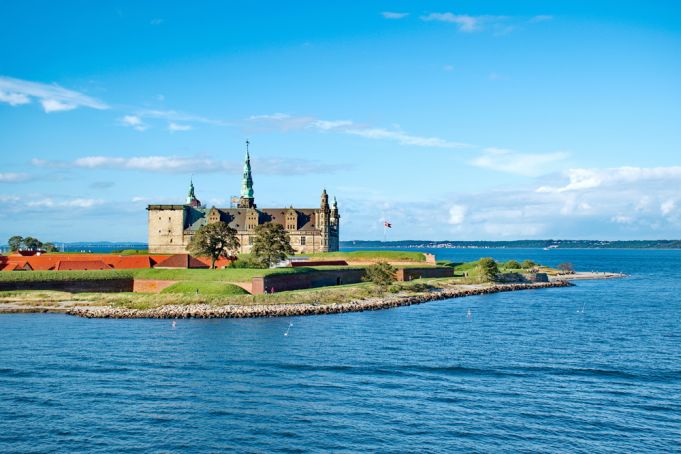
The appearance of the castle was not yet the current one, but after a fire devastated it in 1629, and from which only the inner church was saved, reconstruction began again. King Christian IV had it promptly rebuilt maintaining the original renaissance style and adding baroque details. Following the War of Scania, the castle was conquered by the Swedes until 1660. The king, Christian V, then decided to raise the defensive lines, with a series of ramparts and bastions, transforming it into one of the most impregnable castles in all of Europe.
Also read: All you need to know about visiting the Louisiana Museum in Denmark
After that, Kronborg came to be used as a prison, in which the queen Carolina Matilde of the Wales, sister of the king of Great Britain George III, was locked up for three months in 1772. It then continued to be used for military purposes until 1922 and was later opened to citizens and tourists as a museum. On this occasion the Swedish government handed back some of the property looted from the castle centuries earlier.
Short History of Shakespeare's Hamlet
The story of Hamlet by William Shakespeare is set in Kronborg Castle. In the very dungeon of the castle called Elsinore, Hamlet encounters the ghost of his father who reveals to him that he was murdered by his brother Claudius (Hamlet's uncle), and asks Hamlet to avenge him.While Hamlet, shaken and confused by this news, searches for evidence of what happened, Claudius is proclaimed King of Denmark and marries Hamlet's mother, Queen Gertrude. The proof of Claudius’ guilt comes to Hamlet when, staging a play in which his late father is killed, Claudius gets up and leaves indignantly and fearfully.
Also read: Shopping in Copenhagen: Where to Go and What to Buy
To get his revenge, Hamlet devises an ingenious plan and pretends to have gone mad, but this also leads to major disadvantages. For example, he must give up his true love Ophelia, the daughter of Polonius, advisor to the new King Claudius. Unfortunately, Hamlet accidentally kills Polonius, sending his beloved into despair and killing herself out of grief. Laertes, Ophelia's brother, accuses King Claudius of the murder, although he tries to explain that Hamlet is to blame for what happened and plots with him behind his back.
A fencing tournament is then organized, where Laertes dips the tip of his sword in poison, as well as the mug from which Hamlet would have drunk if he had won. Due to some circumstances, however, it is his mother Gertrude who drinks from that mug and dies. Instead, the poisoned sword strikes both fighters, but Hamlet, before succumbing to his injuries, manages to mortally wound King Claudius as well.
The Inner Courtyard
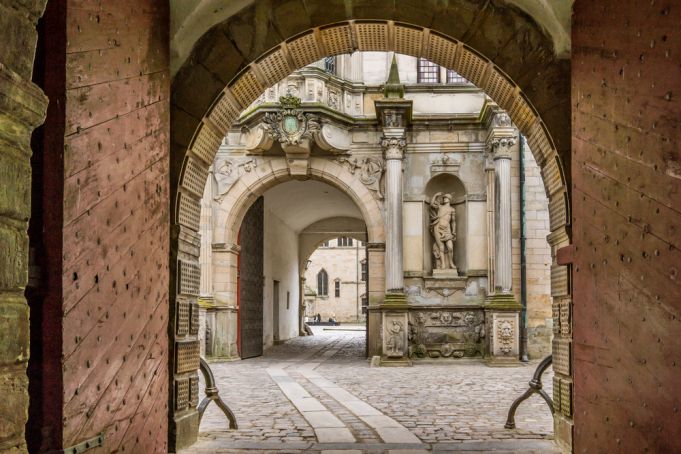
You will reach the inner courtyard of the castle by crossing a bridge, and it is from here that the visit to the castle begins.
The inner courtyard is the heart of Kronborg Castle. The courtyard has the remains of a fountain at its center, plundered by the Swedes during their stay, around which the actors who reinterpret Hamlet and Laertes perform. From here there is a clear view of the cannon tower, the entrance to the kitchens, the dungeons and the church.
Also read: The Faroe Islands in spring
In a corner of the courtyard there are also wooden games that were used centuries ago, including stilts that are left available to visitors, who can try their hand at a difficult walk. Don't give up, and after a few attempts you might start to get the hang of it. Ph: Stig Alenas / Shutterstock.com
The Royal Apartments
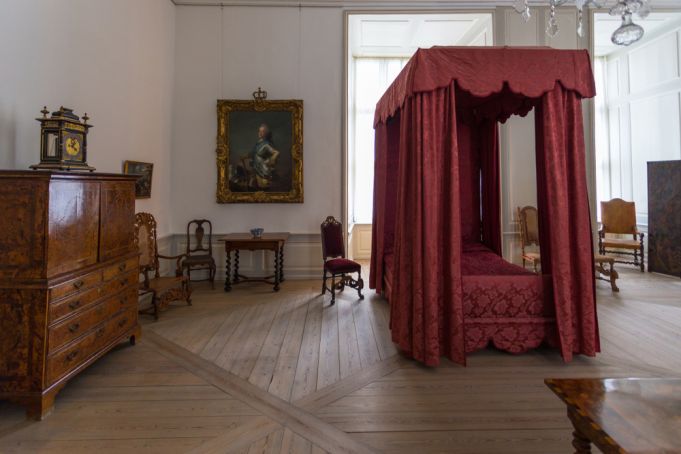
Furnishings are still present in the rooms that give a good idea of how the spaces were used, also large paintings that describe local life are on the ceilings. Most of the rooms are equipped with a fireplace for heating and this demonstrates that they were actually used by important people.
Also read: Denmark apologizes to Inuit children
The visit to the Royal Apartments of Kronborg Castle ends in the beautiful ballroom, which reaches a length of 62 meters and was the longest ballroom in all of Scandinavia. Here the large windows that flood the room with natural light are alternated with large paintings on the walls, while at the end of the room two thrones are positioned. To enter the ballroom, walk down a corridor, which was practically reserved for women, through which they could reach the ballroom without having to go outside, safeguarding their delicate slippers.
The banquets that took place in the ballroom were exaggerated, so much so that they included no less than 65 courses and, for this reason, each guest was given a bucket in which he could vomit during the binge. Ph: Tomasz Wozniak / Shutterstock.com
The King's Tapestries
On the other side of the entrance to the Royal Apartments are the rooms that house the king's tapestries. Again, these rooms are furnished with wooden furniture and wood floors, laid in different ways.The walls are decorated with heavy tapestries, including seven originals from a series of forty tapestries on which one hundred Danish kings were portrayed. These were commissioned by King Frederick II around 1580. Another seven, from the same collection, can be seen at the Danish National Museum in Copenhagen, while the remainder have unfortunately been lost.
The Underground
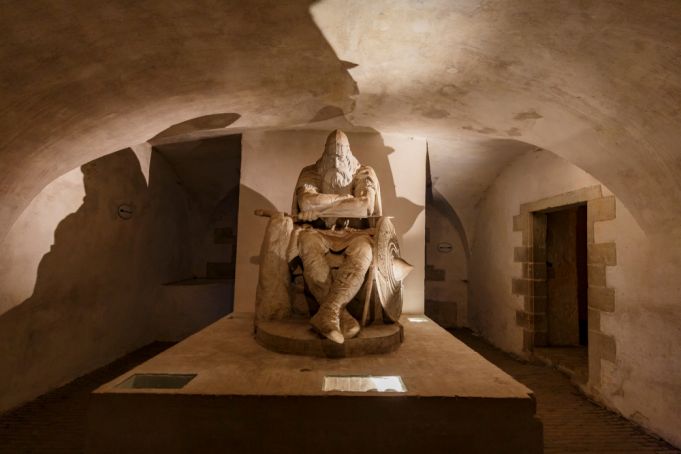
Also read: Best Museums in Copenhagen
The visit begins with the statue of Ogier the Dane, which lights up intermittently. Ogier is a legendary Danish character who is said to dwell in Kronborg Castle, and to have such a long beard that it reaches the floor and he uses it to fall asleep on. Ogier rests quietly in Kronborg Castle and will continue to do so until Denmark is in danger, only then he will wake up from his sleep to intervene and save the country.
The casemates are a rather gloomy place that was used, in part as a storehouse and in part to give shelter to soldiers. Up to a thousand men could be contained inside, with reserves for sieges of up to six weeks. Along its entrances the lighting is managed with dim oil lamps. Ph: Kit Leong / Shutterstock.com
The little church of the Castle
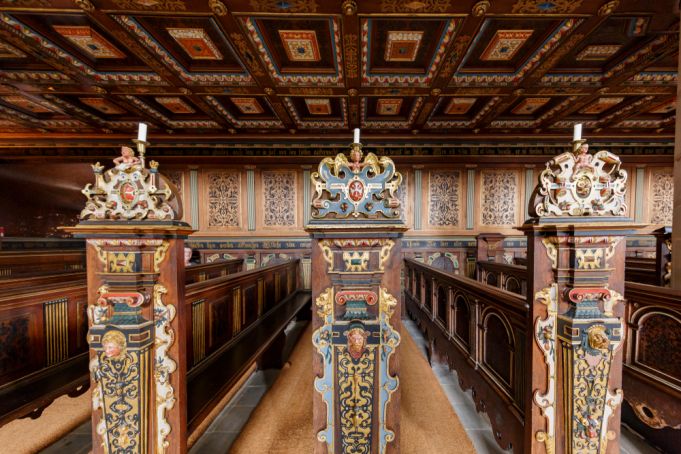
This chapel has generously carved and colorful Renaissance interiors, especially on the richly inlaid wooden furniture laying on the black and white checkered floor.
Kronborg Church is the only part of the castle to have survived the fire of 1629 and was consecrated in 1582. Visiting this little church therefore gives a clear idea of what the style of the whole castle must have been like before the destructive fire, although the interior was renovated in 1843. Ph: Kit Leong / Shutterstock.com
The Cannon Tower
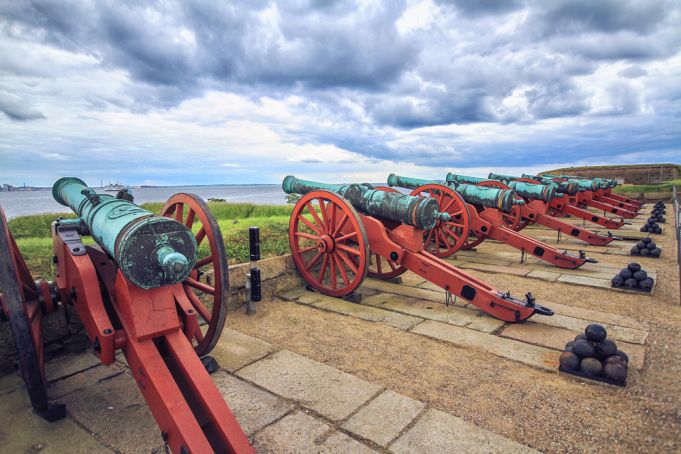
Once at the top, enjoy the view towards Sweden and over the whole city of Helsingør. At this height there is a strong breeze that will help you recover from the heat of the climb up.
The Kitchens of the Castle
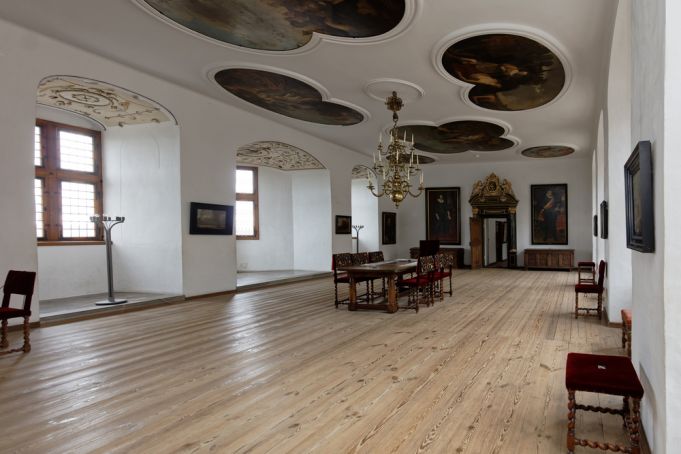
Kronborg had four kitchens in total: one dedicated to the king and one dedicated to the queen, both with all the necessary utensils, and a specific and faithful staff that served to prevent any poisoning of the members of the royal family. A third kitchen was dedicated to the soldiers and the castle's internal staff, while the last one was a kitchen reserved for fried food, capable of arousing the envy of any fast food restaurant!
The kitchen open for tourists is the king's kitchen and, next to it, there are spaces dedicated to visitors who have brought some food with them and can comfortably eat it at special tables and benches. This last aspect is not uncommon in Denmark. In many tourist areas there are spaces for picnics. Ph: StockphotoVideo / Shutterstock.com
How to ge to Kronborg Castle by Train
The most practical way for a tourist based in Copenhagen to get to Kronborg Castle is undoubtedly the train. During the day the frequency is very high, and they arrive every 20 minutes.The most convenient station in Copenhagen is undoubtedly that of Nørreport. From here, in 8 train stops, and about 40 minutes, you arrive at Helsingør station. The ticket for this train is included in the Copenhagen Card, and it is not necessary to convert it into any other travel document. Just simply show your card to the conductor on the train.
Once at the station, the castle is just one kilometer away, a ten-minute walk north. Just a few steps from the station you can clearly see the castle, built where the city's port area is now located.
Danish Maritime Museum
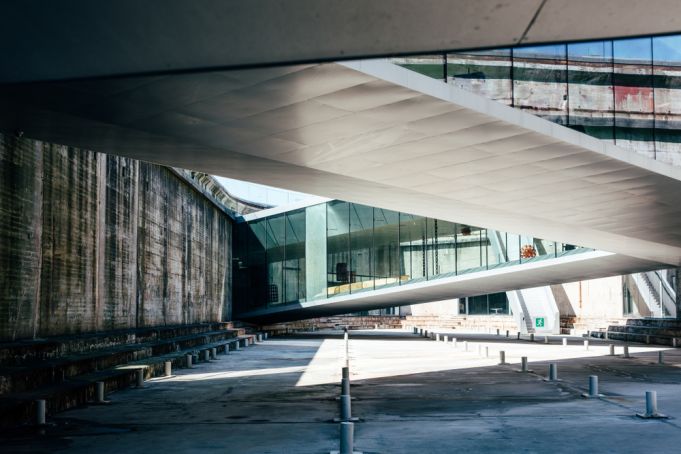
Inside, there are mainly multimedia exhibits that explain Danish maritime culture and history. Through these installations, which are sure to appeal to younger visitors, you can get a seafaring tattoo, run a commercial enterprise or try your hand at navigating. There is also no shortage of more traditional pieces, such as tools like charts and artifacts from war.
The entire museum is located below street level, but the glass walls still give ample light to all rooms. A small bar and a maritime-themed gift store have also been built adjacent to the museum. Ph: JonLi / Shutterstock.com
Han - the Little Mermaid
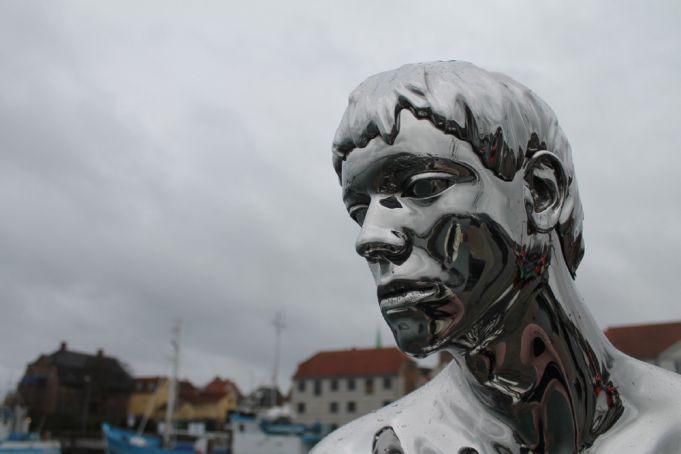
The pose that Han sports is the same as the Little Mermaid and, like her, was installed on a boulder. Unlike the original statue, however, this one is totally constructed of a shiny, reflective metal, which is dazzling on bright days. Ph: R00 / Shutterstock.com
Sankt Mariæ Kirke and Karmeliterklostret - St. Mary's Church and Carmelite Monastery
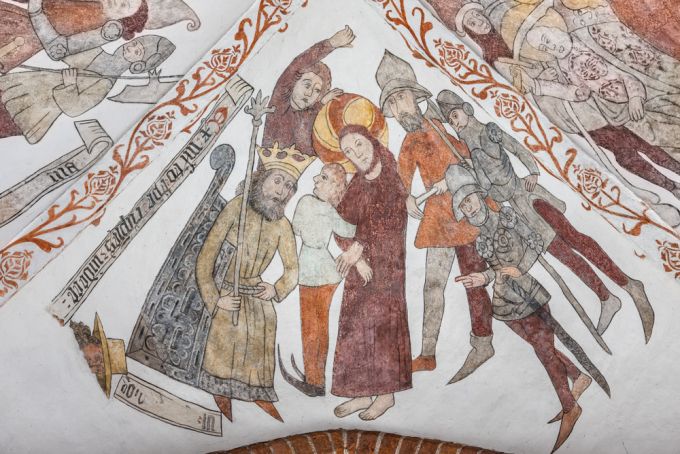
St. Mary's Church, or Sankt Mariæ Kirke, is directly connected to the Carmelite Monastery or Karmeliterklostret. It is one of the few Scandinavian monastic cloisters that has managed to reach the present day mainly intact. The arcades run around a garden with a large tree in the middle. Like the rest of the structure, they are made of exposed red brick. Enter the church through a side entrance that is accessed through the cloister porch.
The church of St. Mary’s is quite large and its interior is divided into three naves. As with the exterior, the interior of the church features exposed brick, while the vaults closing the nave are richly painted. What also attracts visitor's attention, however, is the wooden furniture of the pews for the worshippers, which creaks under people’s weight.
In the interior of the St. Mary's Church you can also admire the 15th century frescoes of bizarre faces, characterized by mouths from which frogs, bulls, foxes and rams sprout.
St. Mary's Church was built as a monastic church between 1430 and 1500 by the monks to whom Erik of Pomerania donated the land, to build this place of worship. The monastery ceased its activities in 1536 and only five years later was converted into a hospital, called "Our Lady Hospital". There were plans to tear down the church, but under pressure from Dutch and German citizens in Helsingør, of the same nationality as the monks who built it, it was kept standing. Despite the renovation at the beginning of the last century, there are many historical pieces preserved inside, such as the frescoes and the organ dating back to 1662, even though these too underwent interventions in 1854 and 1960. Ph: Stig Alenas / Shutterstock.com
Sankt Olai Cathedral
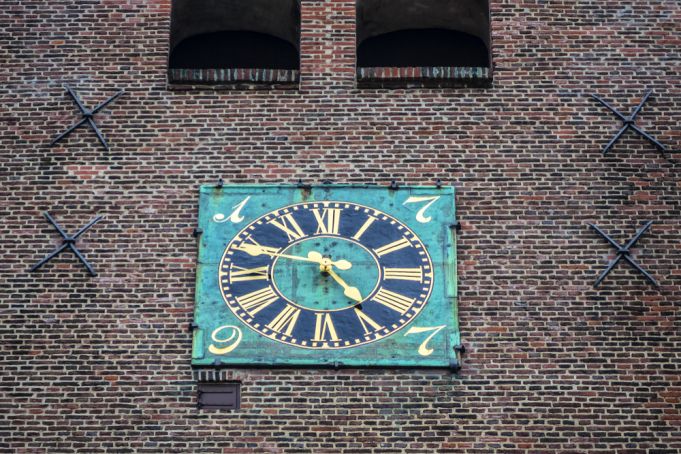
In 1600 the expansion was totally completed and in 1614 a spire was added to the small tower of the church 69 meters tall, even higher than the current spire, and became the symbol of the city until 1736, when strong gusts of wind knocked it down. The current one was constructed in 1888.
Inside is a baptismal font from 1579 and one of the tallest altarpieces in all of Denmark, at 12 meters high. Another special feature of Sankt Olai Cathedral is the cannonball suspended in the north chancel. This was fired at the city by a British fleet ship three days before the Battle of Copenhagen in 1801.
The Tomb of King Hamlet
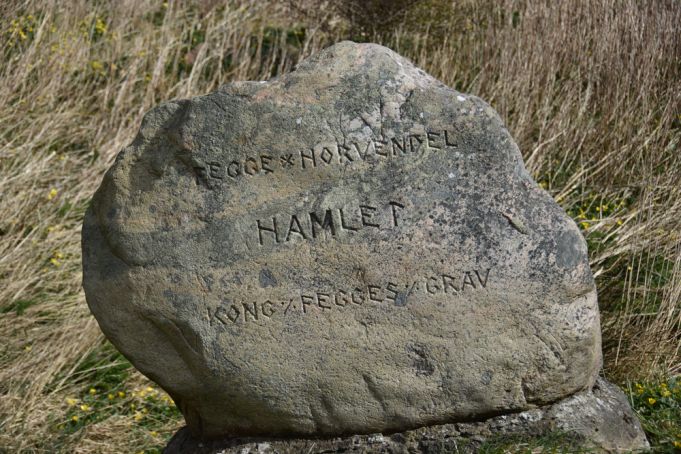
From time to time you might find a nice mural that decorates the walls of the town's houses, and in an alleyway you could come across a tombstone on the ground. This is the tomb of the character of Hamlet, characterized by the iron elements placed around it. In front of the tombstone, two hands seem to emerge from underground, while two stacks of books are placed at the sides. On one of these is also carved a skull, an element inextricably linked to the character of Hamlet.
Rådhus - the Town Hall of Helsingør
Although the visit to Helsingør is practically over, on the way back to the station you can see the Rådhus, the town hall of Helsingør.Nestled among the other buildings on the main street, the town hall is relatively recent. It is housed in a building built between 1853 and 1855 of red brick, on which there is also one of the city's mailboxes. Its windows are decorated with polychromes, which shine under the light of the sunset. The entire building was renovated in 2015, and the stained glass windows, decorated with arches resting on columns, have come back to life.
This town hall replaced the previous building, which had been in use for a good 300 years, and has neo- Gothic elements dictating a new style in Danish architecture. Many of the materials used in the construction of the building come directly from the old town hall, such as the sandstone rosettes.
Helsingør Station
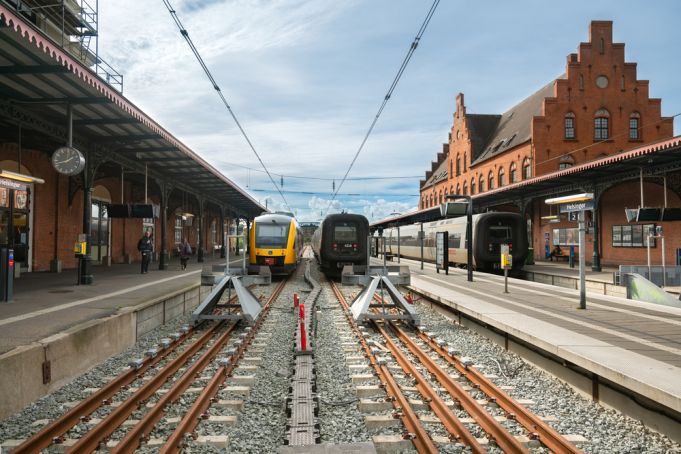
The first Helsingør station was opened in 1864, but it was in a location further south than the present one. Today's building dates back to 1891, when the tracks were restored and the station moved to a more convenient location for ferries.
The style of Helsingør station is reminiscent of Rosenborg Castle in central Copenhagen. Copper-clad spire turrets abound, matching the red brick and sandstone structure. The main entrance is flanked by marble columns.
Its construction required a particular building technique. In fact the structure rests on 1600 piles hammered into the sea bottom, and on which the foundations were laid. The spaces currently occupied by the restaurant inside the station, facing the sea, had been conceived as a royal waiting room. Ph: JordanJoy / Shutterstock.com
Main ph: Dennis Jacobsen / Shutterstock.com
General Info
View on Map
Visiting Helsingør and Kronborg Castle: what to see and what to do
3000 Helsingør, Denmark








